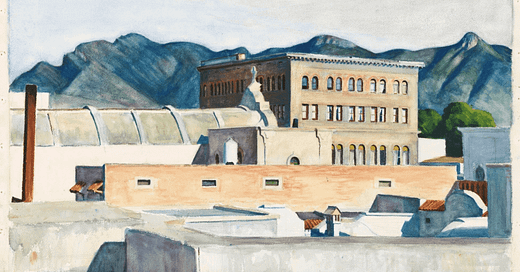A long time ago, I wrote a short piece on Edward Hopper and his connection to Northern Mexico. It was published on a now-dormant blog. I’ve wanted to improve and expand upon my original thoughts for …
Keep reading with a 7-day free trial
Subscribe to Topographic Kitchens to keep reading this post and get 7 days of free access to the full post archives.



